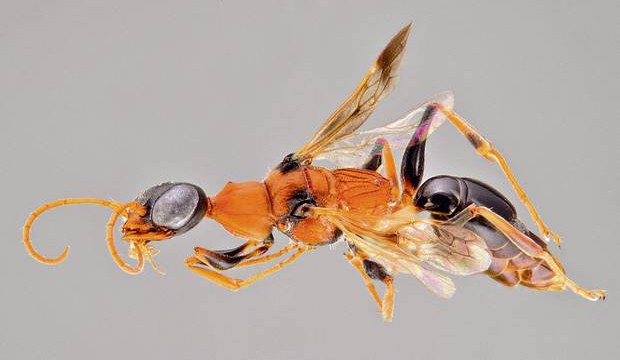
A museum in Germany has used a rather creative approach to get the general public interested in biodiversity research. Thanks to this effort, a new species of wasp has been named after the soul-sucking magical creatures featured in the Harry Potter novels by its patrons.
Currently, much of the public focus rests on the fast disappearing animal or plant kinds - as grave as this issue is, we as a society still fail to appreciate the immense diversity and richness of flora and fauna that inhabit our planet.
Taxonomy is an important branch of science that is dedicated towards not just naming, but classifying and cataloging this colossal amount of biological diversity. Since Linnaeus’s taxonomic research, about 1.8 million species have been described in the past 250 odd years. The current tally of unknown species stands at a massive 5 to 30 million.
In countries across North America and northern Europe, the taxonomic research on collections of biological specimens from across the world is professionally carried out in the natural history museums. At the Museum für Naturkunde in Berlin (Germany), the significance of taxonomy and its implications on biodiversity research are conveyed to its visitors on an almost daily basis. To go a step further, the museum conceived a public engagement program, in which the patrons of the museum were treated to a one-of-a-kind night at the museum that involved some serious taxonomic work.
For the purpose, the museum chose a species of wasp from the Ant-mimicking Ampulex genus, native of Thailand. The members of this genus prey mainly on cockroaches. Their mode of attack involves administering a paralytic sting: The paralyzing effect of the sting is interestingly partial – certain behavioural functions are affected in such a way that the cockroach can in fact be mobilized by its own locomotion, but it cannot attempt any struggle. The wasp thus successfully drags the docile “zombie” prey by its antenna to its nesting site.
A ballot was held, and the visitors were asked to decide on a scientific name for this new species of wasp. The following name choices with the accompanying explanatory texts were given to the visitors:
Ampulex bicolor: derived from the Latin bi = two and color = color; an allusion to the distinctive, black-red coloration of the wasp.
Ampulex mon: The Mon people are one of the earliest known ethnic groups in Thailand. The name is an allusion to the geographic origin of the wasp from Thailand.
Ampulex dementor: The species name refers to the dementors, which are fictional characters appearing in Harry-Potter-books. Dementors are magical beings, which can consume a person’s soul, leaving their victims as an empty but functional body without personality and emotions. The name is an allusion to the docility of the paralyzed cockroach.
Ampulex plagiator: The new species is an ant-mimic: It tries to imitate ants in its general appearance as well as in its way of moving. One can say that the wasp is a plagiarist of the ant.
This is not the first time that the public has been involved in taxonomy. In the UK, a nation-wide naming contest was held in 2010 to commemorate the international year of biodiversity. The public was encouraged to come up with a common name for a native endangered beetle species by combining elements of culture and humour. The British click-beetle Megapenthes lugens was thus given the new identity as Queen’s executioner beetle.
In Berlin, at the end of the voting, the wasp was named Ampulex dementor by popular demand! The museum has called the public participation and the turnover of votes a success towards educating the public about taxonomy and biodiversity, while the visitors in turn seem to have developed an emotional attachment to the wasp in itself. Encouraging public participation is the key to reviving taxonomy to its original glory of being the people’s science, emphasize the researchers from the Museum für Naturkunde.
The details of the methods and the events leading to the naming of Ampulex dementor can be accessed in the article titled ‘The Soul-Sucking Wasp by Popular Acclaim – Museum Visitor Participation in Biodiversity Discovery and Taxonomy’, published on PlosOne.
Cover image: Ampulex dementor (Ohl et al.)
References
Ohl M, Lohrmann V, Breitkreuz L, Kirschey L, Krause S (2014) The Soul-Sucking Wasp by Popular Acclaim – Museum Visitor Participation in Biodiversity
Discovery and Taxonomy. PLoS ONE 9(4): e95068. doi:10.1371/journal.pone.0095068
http://www.cbd.int/gti/taxonomy.shtml
http://en.wikipedia.org/wiki/Megapenthes_lugens
Stats
- Recommendations +1 100% positive of 1 vote(s)
- Views 3713
- Comments 0
Recommended
-

Alen Piljić
Managing director | Life Science Network gGmbH
Also:
- President | Research Elements Association